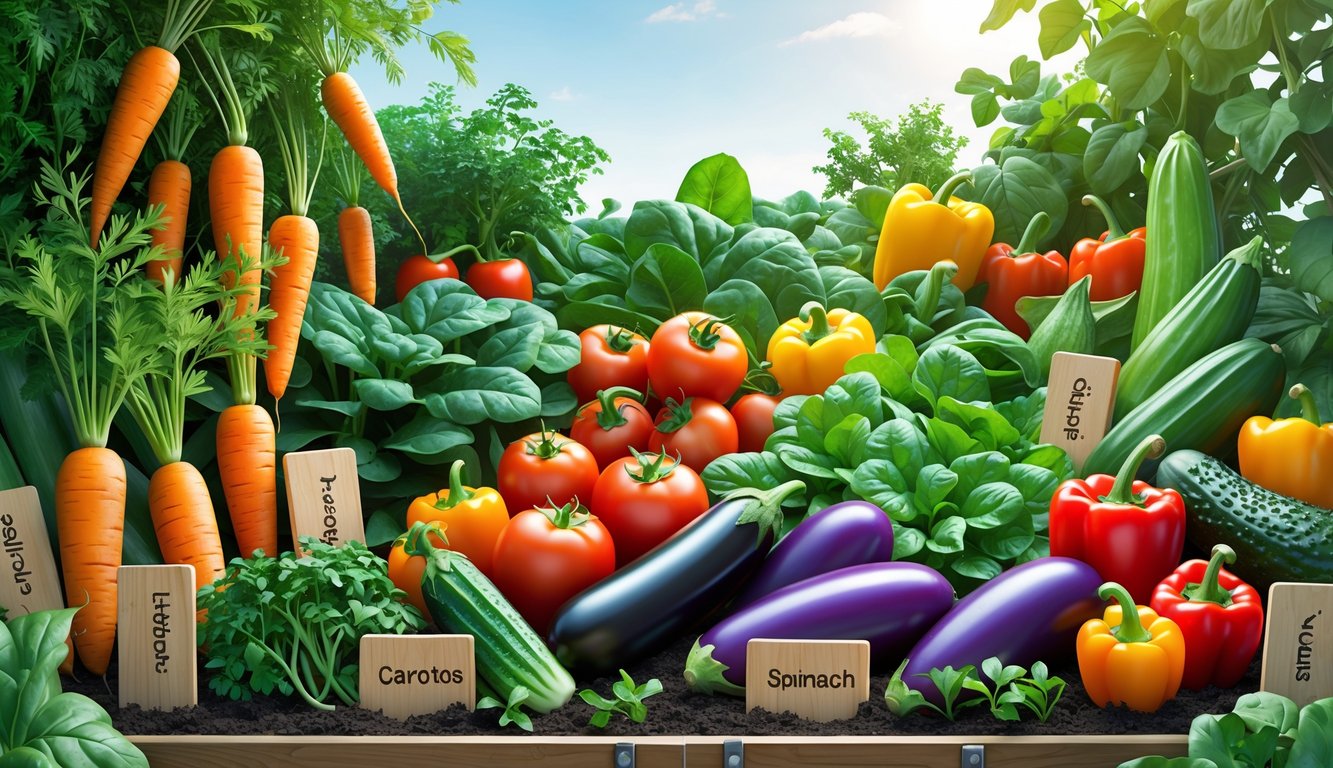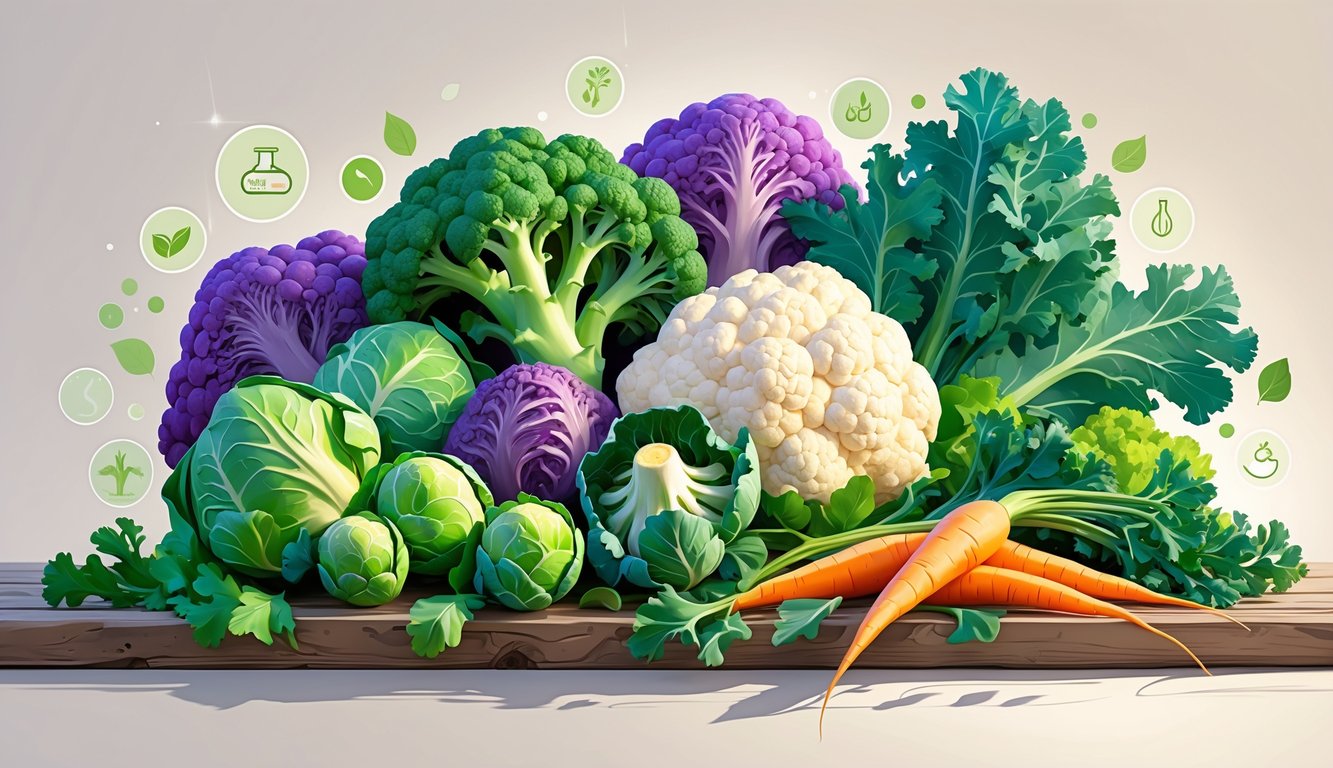
So, apparently, growing vegetables in your own backyard isn’t just for people with way too much time and a suspiciously perfect Instagram feed. I used to roll my eyes at the “homegrown is best” crowd. But then nutritionists started going on and on about how tomatoes straight off the vine, spinach that’s still got dirt on it, and kale you basically have to wrestle out of the ground are all somehow packing way more vitamin C and antioxidants than the limp stuff at the grocery store. Did I notice? Not until I found out fresh-picked veggies actually hold onto more nutrients. So, yeah, planting dark leafy greens, broccoli, and peppers at home is supposed to mean more nutrients in my dinner, not just more mud on my shoes.
Spinach and Swiss chard—sure, everyone says those, but a dietitian friend (who honestly has the chillest garden I’ve ever seen) swears the “secret” is just picking them right before eating. She once texted me, “Just ate raw beets I yanked out of the ground—life-changing!” Okay, dramatic, but I get it. Nutrients start disappearing the second you pick stuff. That’s not even up for debate. But does anyone ever talk about how carrots grown at home are supposed to have “higher phytonutrient density”? Or is that just code for “tastes more like dirt and stains your hands”?
One time, I planted way too much broccoli as a joke and ended up eating it for weeks. It tasted snappier and, I guess, “healthier” than the supermarket stuff. Nobody warned me that growing your own means you end up with a fridge full of weirdly intense greens. Nutritionists love these, but half the time they’re just the same plants you ignored at the garden center.
Why Nutritionists Won’t Shut Up About Homegrown Veggies
People keep stuffing soggy lettuce into sandwiches and pretending it’s the same as the stuff I pull from my backyard. It’s not. Supermarket spinach is bland and tired compared to the dirty, root-tangled bunch I just yanked up. More nutrition, better taste, no weird waxy coatings or “fresh” labels slapped on something picked weeks ago.
Nutrient Density (Which Isn’t Just a Buzzword, Apparently)
You know what’s wild? Dropping soil all over the kitchen floor is actually worth it. Nutrient density isn’t just a marketing thing. The numbers are there: produce loses vitamin C, B vitamins, potassium—pretty much everything—just from sitting around and traveling. Harvard’s updates say homegrown kale has more folate. Fresher is richer, and I don’t even like kale that much.
People forget about crop rotation, too. If you want nutrient-packed veggies, your soil has to be decent, not just “aesthetic.” Grocery store greens travel, what, 1,500 miles sometimes? When my carrots taste like earth, I’m getting more magnesium, not just nostalgia for my dad’s muddy boots. You want that? Cool, but admit a nutrient-rich soil is the real foundation.
Bioactive Compounds: The Stuff You Can’t Pronounce
I tried explaining sulforaphane to my kid—total fail. Still, even broccoli haters admit those weird compounds are good for you. My own brussels sprouts are apparently loaded with glucosinolates, and they haven’t been sitting in a truck for three weeks. Antioxidants like lycopene and beta carotene? Not just health-speak. They actually do something, but you barely get any from pale, flavorless supermarket tomatoes.
I’m pretty sure I read somewhere (maybe here) that fresh-cut cabbage releases compounds that store-bought never will. The science is real, not just hype. If I cut chard in the morning, it’s still loaded by dinner. Who’s timing their salads? Apparently, I am now.
Flavor and Freshness: Not Just for Food Snobs
A tomato that goes from vine to sandwich in half an hour? That’s the dream. The sugars, the oils, the crunch—there’s actual science behind it: more sugar, more amino acids, better taste. Nutritionists who actually eat vegetables say homegrown tastes better because the taste is a clue to nutrients—sweet means minerals, bitter means polyphenols.
One time, I found a beet in my fridge three months after I bought it and it looked exactly the same. That’s not food, that’s a science project. I’ll take ugly but perishable any day. Homegrown stuff doesn’t have those weird coatings or chemical residue. My taste buds—and any scientist who’s paying attention—can tell the difference, but most people never even try.
Cruciferous Vegetables: The Real Heavy Hitters

If you’re even half-serious about growing your own, you end up with the classics: broccoli, kale, cauliflower, cabbage. Not just “healthy fillers”—these things are fiber bombs with more micronutrients than most of the vitamins in my cabinet. There’s actual research about their cancer-fighting stuff. I’m not a doctor, but the nutritionists I talk to aren’t exactly selling essential oils here.
Broccoli: Sulforaphane Overload
Every year, I think broccoli will finally disappoint me, but no. It’s annoyingly good for you. Eat it raw and you get a ton of sulforaphane—that’s not just a rumor, NutritionFacts.org has studies showing it helps your brain, eyes, even blood sugar. Most people boil it to mush and lose half the benefit. Apparently, letting cut broccoli sit for 30–40 minutes before cooking keeps those enzymes alive.
People keep asking about supplements—no need. Just grow it, chop it, eat it. The sharper the taste, the more sulforaphane (I think). Lost? Just toss florets into whatever you’re making, but please, don’t drown it.
Kale: Not Just for Hipsters
I thought kale was just for Instagram until I saw the nutrition label. One raw cup has almost 700% of your daily vitamin K. Unlike spinach, kale doesn’t overload you with oxalates, so your body actually uses the iron. I stopped worrying about anemia when I started eating more kale.
Fiber’s not bad either—2.5 grams per cup, which adds up if you’re like me and never hit your fiber goal. Chefs say “massage” your kale for better iron absorption. I’m not that fancy, but it works in soups, smoothies, or just sautéed with garlic. Sometimes I dump in chickpeas and call it dinner.
Cauliflower: The Underdog
Cauliflower looks boring, right? But it’s sneaky. One raw cup = 2 grams fiber. Swap it for mashed potatoes and you get more fiber, fewer carbs. I mash it with Yukon golds for extra creaminess. Even my picky family eats it.
It’s also loaded with vitamin C (77% of your daily value per serving), and those glucosinolates are linked to less inflammation and maybe some cancer protection (source). Roasted at 425°F, it actually tastes sweet. Don’t toss the stems—slice ’em into stir fry and stop wasting food.
Cabbage: Gut Health Sleeper Pick
Cabbage is always the sidekick, but it’s a gut health champ. Tons of insoluble fiber—let’s just say it keeps things moving. It also ferments super easily. Homemade sauerkraut? Not just for hipsters. It’s packed with probiotics, and honestly, it’s better than most yogurt. My grandfather called cabbage “poor man’s medicine.” He was right.
Bonus: Cabbage is full of glucosinolates, which is why it gets the cancer-fighting reputation. I keep hearing red cabbage has even more antioxidants—and it actually tastes better raw. Toss it in fried rice, slice it into slaws, ignore anyone who says boiled is the only way. Tried juicing a whole head once. Don’t. You’ll need a bigger glass. Anyway, fiber, antioxidants, gut stuff—all in that boring green ball.